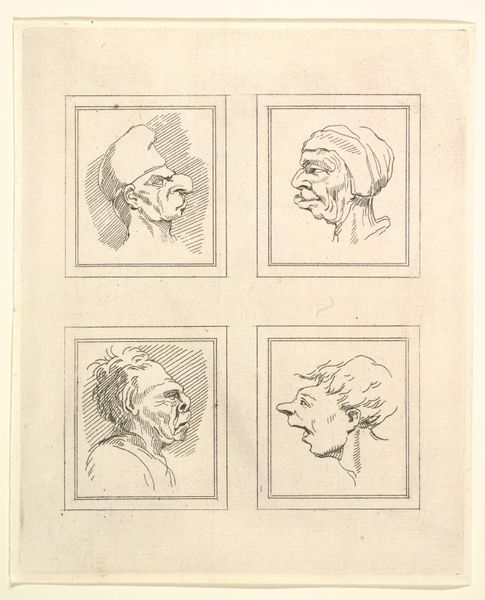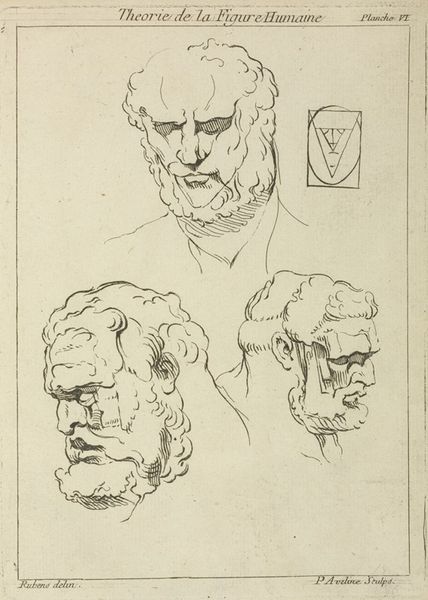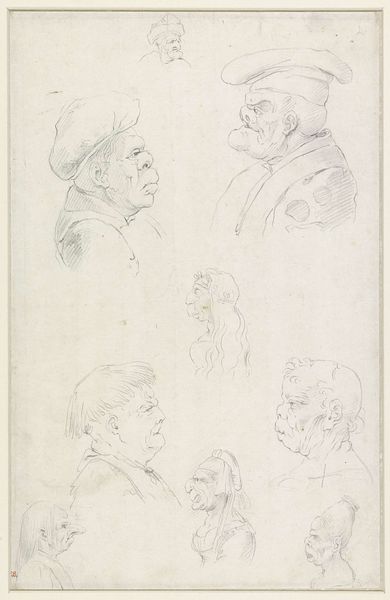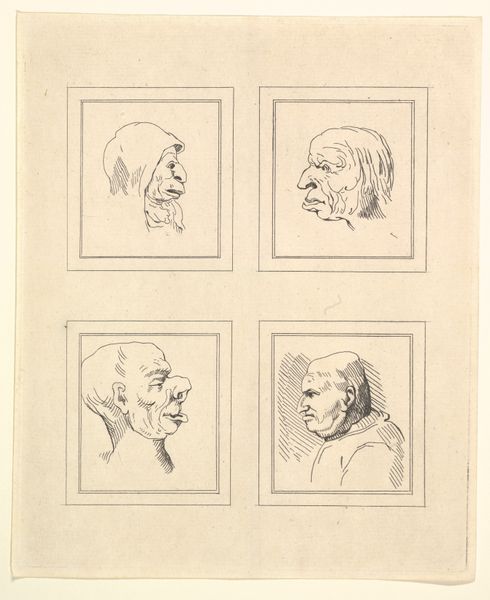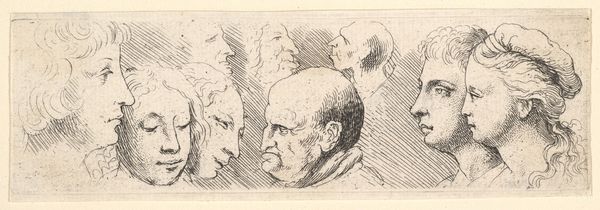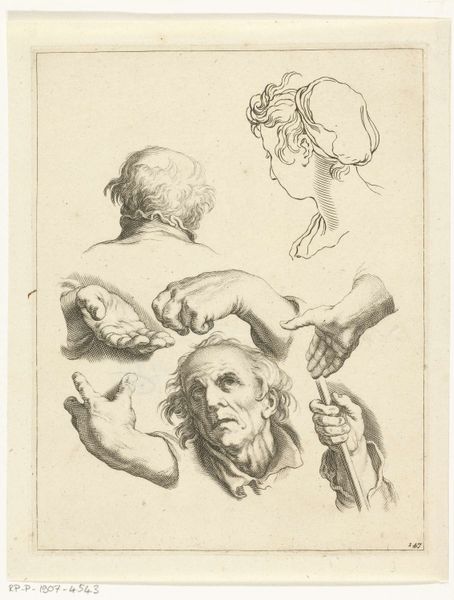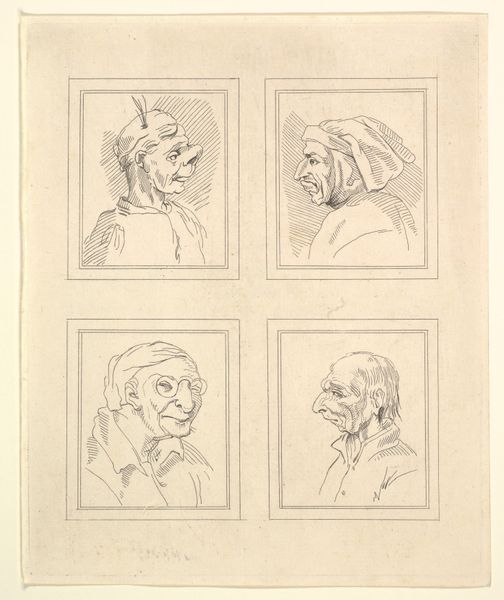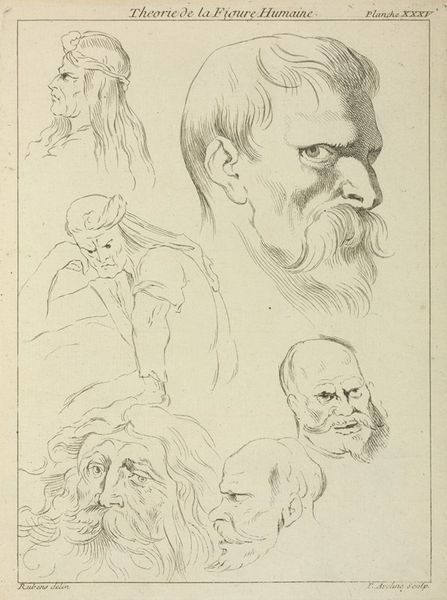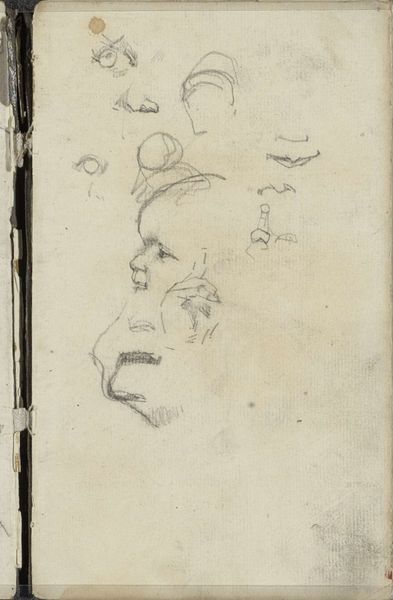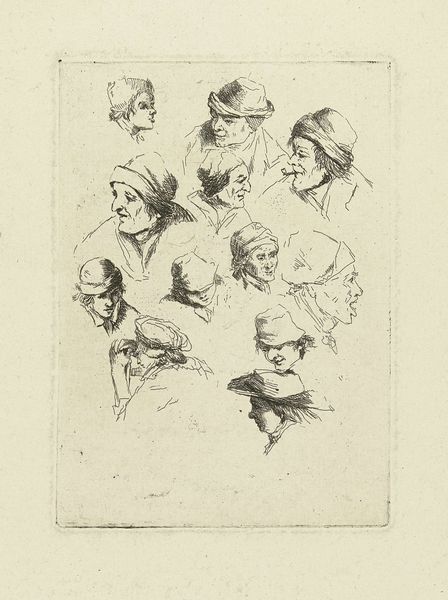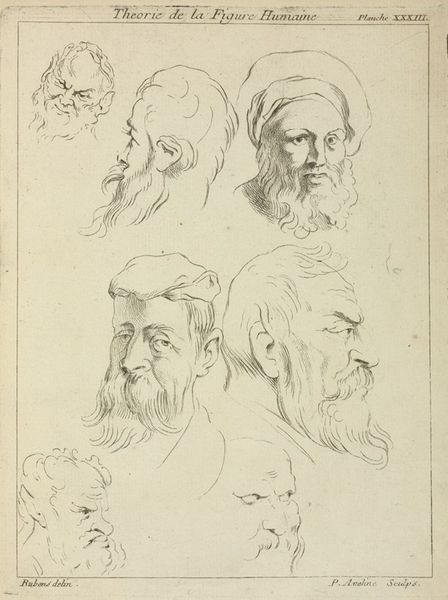
drawing, print, engraving
#
portrait
#
drawing
# print
#
figuration
#
form
#
line
#
portrait drawing
#
academic-art
#
engraving
Copyright: Public Domain: Artvee
Curator: What strikes me first is how classical this composition feels. Four faces in profile—three human, one horse. It looks to me like it’s an engraving, something like a drawing made into print—possibly by or after Peter Paul Rubens. The print feels old and like an academic-art, doesn't it? The precision of the lines, especially. Editor: Yes! Though I’m less taken with the classical element right now, and more with how visceral the images of the figures feel, how fleshy the faces appear and feel. They are very corporeal. It's like looking at anatomy drawings, a scientific-medical sort of work, yet there's an artistry at play in the creation. You almost want to reach out and touch their skin. Do you find yourself drawn to them the same way? Curator: Absolutely! The starkness of the print enhances the intense observation of the details—every wrinkle, every bulge. The way Rubens or whoever after Rubens managed to bring that intensity across feels both revealing and almost a little uncomfortable to consider. We stare directly into their faces in a way you wouldn’t normally dare. Perhaps one would find oneself transfixed when first setting one’s eyes upon such works. I find myself questioning why this particular assembly was brought together in a piece titled “Theorie de la Figure Humaine.” What do the differences—particularly with the inclusion of the horse—reveal about ideal and non-ideal depictions of the human figure? Editor: Well, for me, it brings out some ideas about humans seeing themselves in animals, recognizing certain kindred emotions, the way their faces mirror ours, how even human expression can feel beastial, raw, maybe even not particularly thoughtful! I like how those strong lines give form and tension in equal measure. What you call visceral intensity and uncomfortably revealing, I might call... refreshingly candid, even humorous! But isn't that why we have images to begin with – to have dialogue about our differences? To speak of human experience! The piece holds so much for contemplation... Curator: Indeed. There’s a definite power to visual language at play here—an appeal to intellectual scrutiny and a connection with something very primitive, even animalistic. A fascinating paradox. Editor: Yes. Even after seeing it for so long it makes me feel alive in some unexpected, unpredictable ways. I hope the audience will, too.
Comments
No comments
Be the first to comment and join the conversation on the ultimate creative platform.
